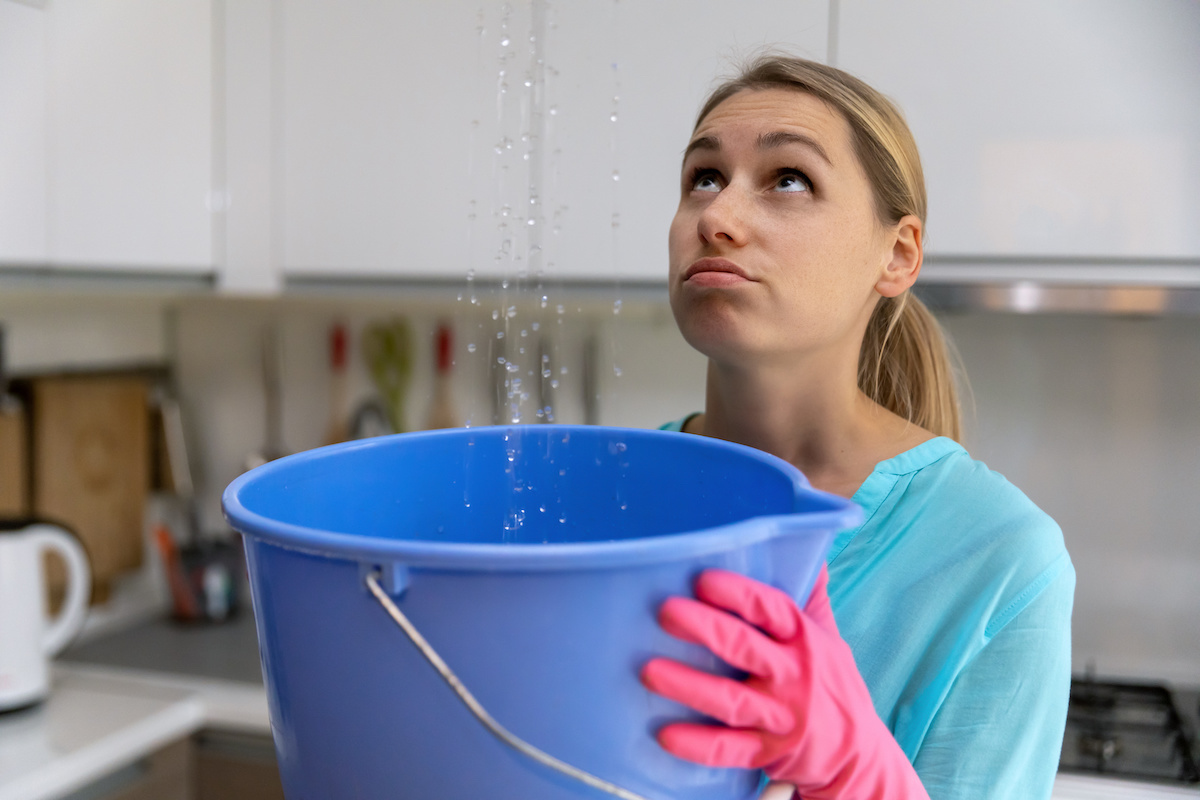The Residential Common Frequent Leak Factors: Investigation
The Residential Common Frequent Leak Factors: Investigation
Blog Article
Just about every person has their own individual theory about Common Water Leaks In House.

Leaks not only create waste of water however can also cause unnecessary damage to your house and also advertise unwanted organic development. Water leakages may go undetected considering that many of the pipework in our residence is concealed. By comprehending as well as looking for daily situations that cause leakages, you can secure your residence from future leakages and also unnecessary damage. Today, we will take a look at six leakage triggers that might be causing your pipelines to drip.
Encroaching origins
Most water leakages begin outside the house as opposed to inside it. If you discover an abrupt reduction in water pressure, state in your tap, take some time to go out as well as examine your lawn. You could see damp patches or sinkholes in your lawn, which might mean that tree roots are invading water lines causing water to leak out. You can have your plumber look for breach, particularly if you have trees or shrubs near your home.
Corroded water supply
This could be the reason of discoloration or warping on your water pipelines. If our plumbing system is old, take into consideration replacing the pipes considering that they are at a higher danger of deterioration than the more recent models.
Defective Pipe Joints
Pipeline joints can deteriorate over time, resulting in water leakages. If you have loud pipelines that make ticking or banging sounds, specifically when the warm water is turned on, your pipe joints are probably under a whole lot of stress.
Instantaneous temperature changes.
Extreme temperature changes in our pipelines can create them to broaden as well as contract unexpectedly. This expansion and also contraction might create splits in the pipelines, particularly if the temperature are below freezing. It would be best if you kept an eye on how your plumbing works. The existence of the previously pointed out conditions often suggests a high risk.
Poor Water Connectors
At times, a leakage can be triggered by loosened pipes and pipelines that supply your devices. Generally, changing is what triggers the loose water Links. You might locate in the case of a cleaning machine, a hose pipe may spring a leak as a result of shaking throughout the spin cycle. In case of a water links leak, you might observe water running directly from the supply line or puddles around your devices.
Blocked Drains
Obstructed drains could be annoying as well as inconveniencing, yet they can in some cases wind up causing an overflow resulting in rupture pipelines. Keep eliminating any kind of materials that may decrease your drains pipes that could clog them to stay clear of such aggravations.
All the above are root causes of leakages however not all water leakages arise from plumbing leaks; some leakages could come from roofing leakages. All leakages should be fixed right away to prevent water damages.
Leaks not only trigger waste of water however can also create unneeded damages to your house and also promote unwanted natural growth. By comprehending as well as looking for day-to-day scenarios that cause leakages, you can safeguard your home from future leaks and unnecessary damages. Today, we will look at 6 leakage creates that may be causing your pipelines to drip.
At times, a leak can be created by loose hoses and pipelines that provide your home appliances. In situation of a water links leak, you might discover water running directly from the supply line or puddles around your home appliances.
How To Check For Water Leak In Your Home
How To Check for Leaks
The average household's leaks can account for nearly 10,000 gallons of water wasted every year and ten percent of homes have leaks that waste 90 gallons or more per day. Common types of leaks found in the home are worn toilet flappers, dripping faucets, and other leaking valves. These types of leaks are often easy to fix, requiring only a few tools and hardware that can pay for themselves in water savings. Fixing easily corrected household water leaks can save homeowners about 10 percent on their water bills.
To check for leaks in your home, you first need to determine whether you're wasting water and then identify the source of the leak. Here are some tips for finding leaks:
Take a look at your water usage during a colder month, such as January or February. If a family of four exceeds 12,000 gallons per month, there are serious leaks.
Check your water meter before and after a two-hour period when no water is being used. If the meter changes at all, you probably have a leak.
Identify toilet leaks by placing a drop of food coloring in the toilet tank. If any color shows up in the bowl after 10 minutes, you have a leak. (Be sure to flush immediately after the experiment to avoid staining the tank.)
Examine faucet gaskets and pipe fittings for any water on the outside of the pipe to check for surface leaks.
Undetected water leaks can happen without the home or business owner even realizing. If you suspect a water leak, but not able to find the source. It is time to contact a professional water leak detection service, The Leak Doctor.
How To Find a Water Leak In Your Home
https://www.leakdoctor.com/blog/How-To-Check-For-Water-Leak-In-Your-Home_AE197.html

I was shown that editorial about How to Find Water Leaks through a good friend on a different web property. Sharing is caring. You never know, you may just be helping someone out. Thank you for your time. Don't forget to visit our site back soon.
Book Your Appointment Report this page